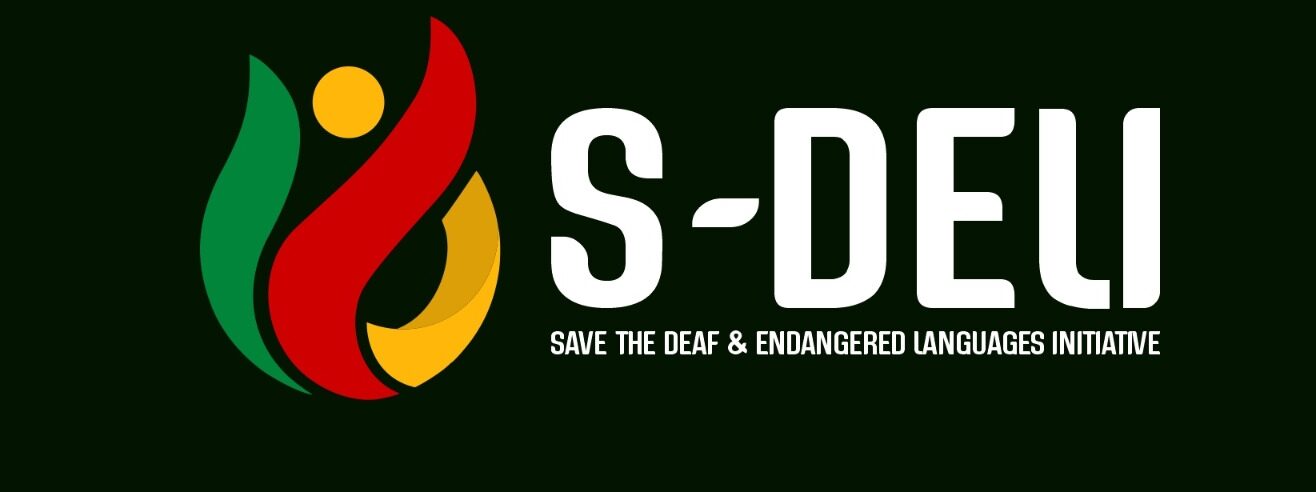Report Summary
This report details the planning process, delivery and subsequent proceedings of the Indigenous Hands and Voices of African Identity virtual conference held January 7th-8th 2021. The first of its kind, the conference was focused on discussions on indigenous African spoken and signed languages.
Pre-conference Activities
The conference necessitated a rigorous planning process carried out by a small Organising Committee of 13 members. The Committee represented different institutions and organizations in Nigeria, United States of America, and the United Kingdom. Official conference planning began in August 2020. The Committee met virtually at least once in a month.
Accessibility
One of the conference’s primary objectives was to facilitate an inclusive virtual environment, wherein discourse could flow smoothly regardless of language modality. The Committee recognised the language discrepancies and carefully considered the accessibility needs of Deaf presenters, sign language interpreters and the rest of the participants. Further, the conference was intended to be an international conference, which meant internet connectivity strengths was also a major issue for the committee. This was especially with regards to the quality of interpretation delivery for participants from Africa. There was an indication that Deaf scholars from the UK and America would attend the conference with their sign language interpreters. With this development, the committee began to deliberate on how to accommodate the interpreters for a maximum accessibility experience for all.
Delivery
The Committee worked closely with the technical team to design an efficient, easily accessible conference delivery system with maximum audio and video quality. Opening Speeches, Keynote Presentations, Lead Paper Presentation, and announcements were delivered in the conference main room. Parallel plenaries sessions took place in three Breakout Rooms – one room for signed language presentations and two rooms for presentation on spoken languages. Participants chose which room to attend based on their interests. Sign language interpreting was provided in the main room and signed languages room.
To mitigate connection issues on conference days, all presentations were pre-recorded by the presenters with African based sign language interpretations imbedded in the sign language presentations. The presentations were broadcasted locally from the moderator’s device. The main conference platform was Zoom. However, presentations were also made available on the SDELI YouTube page via a private link. This provided attendees with an alternative means of viewing the presentations if the Zoom delivery was weak. In these breakout rooms, three to four presentations were played in succession. Participants would then convene for a discussion and Q&A session. Live signed language interpreting was provided in multiple sign languages during these sessions.
Conference Activities
A total of 135 participants registered for the conference, and approximately 50 people attended each session. Out of which the majority, approximately 40 participants, attended each of the signed languages sessions. These numbers were consistent over both days. The conference began with welcome speeches from the Dr. Charles Becknell, Director, Africana Studies of the University of New Mexico and Prof. Enoabasi Urua, Chair of the Organizing Committee. The spoken language keynote presentation (‘Language Rights’) was given by Prof. Imelda Udoh of the University of Uyo, Nigeria. The signed language keynote presentation (‘Nothing About Us Without Us’) was given by Dr. Victoria Nyst from Leiden University, Netherlands. The Lead Paper was presented by Dr. Chika Esiobu to both signed and spoken language groups. During the conference, there was a special segment dedicated to the Unveiling of the Naija SignApp, a forthcoming SDELI project, a brand of The Indigenous. This segment showcased a video presentation of the project, followed by a Q&A session.
The signed and spoken languages presentations were facilitated in their respective breakout rooms, alongside their accompanying Q&A sessions. Presentation delivery went smoothly, with most participants watching via the Zoom platform. The video and audio quality were delivered as expected. Post-presentation discussions were in-depth and engaging. Participants were encouraged to join in via their cameras, microphones or the Chatbox feature. These discussions sessions saw all attendees engaged in some capacity. Some questions were directed to specific presenters, but a significant portion of the discussion was dedicated to open contributions from the room.
Post-conference Activities
Towards the end of the conference, the Committee released a survey to participants to gather feedback. Once this survey was collated, the Committee held a meeting to discuss the results as well as post-conference proceedings. This included sharing a follow-up thank you message to all presenters, interpreters, and attendees. Further, the Committee arranged to release certificates of attendance to participants. The Committee hopes to publish all conference proceedings and looks forward to planning the Indigenous Hands and Voices of African Identity Conference 2022 (IHAVAIC22).
Conclusions
In conclusion, the Committee regards the conference a success. One of the first conferences of its kind, it was an immense achievement in the field of indigenous African signed and spoken languages. The conference joined together academics, practitioners and advocates globally to facilitate meaningful conversation. The Committee hopes these conversations will continue outside of the conference.
